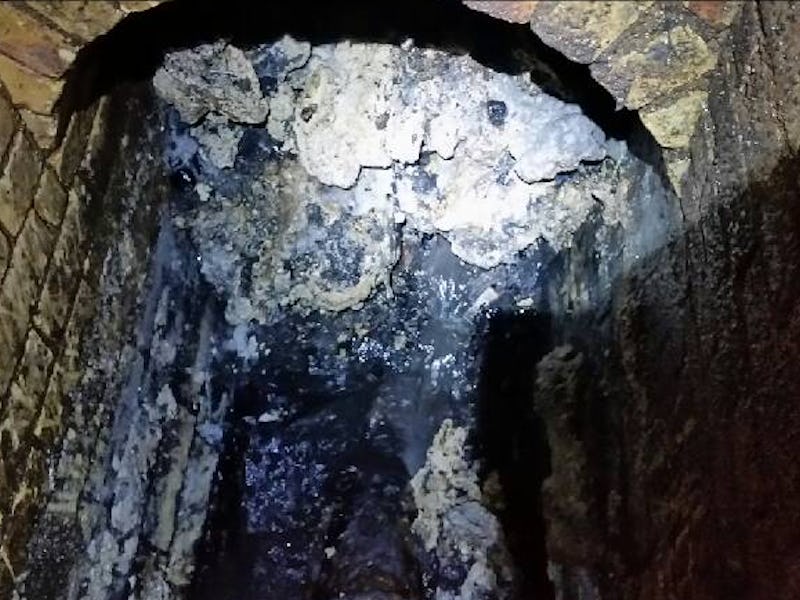London's Literal Trash Monster -- The Fatberg -- is Finally Slain
The "evil, gut-wrenching, rancid blob" is no more.

After nine agonizing weeks, a group of workers have finally destroyed a 800-foot “fatberg” clogging a sewer in East London. According to the BBC, the final section of the 130-ton mass of wet wipes, napkins, fat and oil had to be cleared “manually using shovels.”
“Our work is finished, and the beast finally defeated after a mammoth effort from the team,” Waste network manager Alex Saunders said in a statement. “It was some of the most gut-wrenching work many would have seen on national television, and one of the reasons why the man-made Whitechapel fatberg captured the world’s imagination.”
The fatberg at its peak.
It took eight brave workers from Thames Water to finally rid the sewer of the fatberg. The removal took longer than expected because the fatberg had apparently destroyed some of the sewer, making conditions less than ideal for workers.
As usual, we only have ourselves to blame for the beast. Basically, people put things down the toilet that they shouldn’t, and unsurprisingly, those wretched items clump together and form a fatberg. When you’re dealing with a Victorian-era sewer, this is a recipe for disaster.
There might be a silver lining, though. In September, Thames Water announced its plans to turn the trash heap into 10,000 liters of biodiesel. At this point, turning the garbage monster into a clean alternative to fossil fuel would make for a very happy ending.
Some people say the fatberg is disgusting. Saunders once called it an “evil, gut-wrenching, rancid blob.” But I think the fatberg is more of a metaphor for the human experience. Maybe the real fatberg is the friends we made along the way.